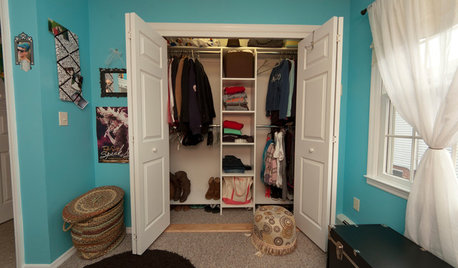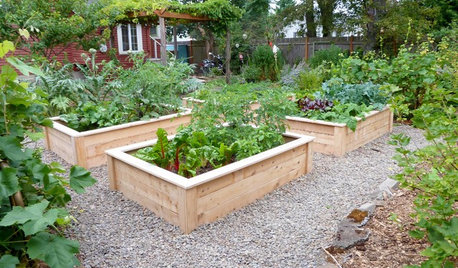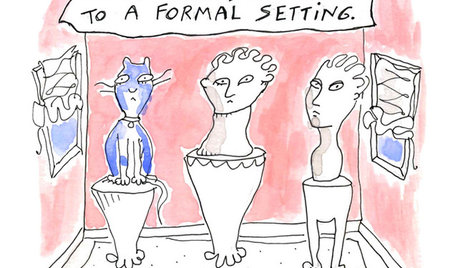Where to begin?!?!? I'll just start a laundry list with my questions... I wish I could post pictures... But I am so new to this forum and gardening! I have posted a few times before and got great help. Now I have our garden that my 2.5 yr old and I tend to, but I really have no idea what I should be doing.
All my questions will go in order of how my garden is laid out- so broccoli is in the front... Also my garden is about 12x12, although I think I have convinced my husband to take more out so u can maybe plant some cucumbers, but I don't know if it's to late to start them here...
1. Broccoli- planted in Jan maybe... I have a bunch of it fairly close together- maybe between 4-8 in apart. Plants are about 1-1.5 ft tall, pretty hearty leaves, but no broccoli buds in center yet. No leaves are yellow or anything and nothing is showing signs of near death.
- I assume I planted this at wrong time of year. Should I pull it all up? Do I need to thin it out?
2. Brussel sprouts- planted about 4-8 inches apart... About 8 inch high plants on average. Very green, no signs of near death, but growth seems to be slowing down.
- is it wrong season? Are they too close together?
3. Tangerine Pimiento Sweet Pepper- planted so close together... Some within an inch of each other. They are about 6 inches tall. A could have 1 white flower each on them.
- season? Thin out?
4. Tomatoes (planted from seed in late Jan)- planted quite close together- some within inches of each other. Heights ranging from 8-18 inches. A few have little yellow flowers.
- did I plant these too late? Should I thin them out? Am I going crazy, but I swear maybe as a child, I remember someone saying to pinch off the early flower buds. I haven't yet, for fear I am nuts ;)
5. Peas- I thought they were green beans. They grew great for awhile, I put up stakes and netting for them to climb. They climbed for a couple weeks. Then they all died at the same time. So now I have the netting still up, and I just pulled out all the dead plants.
- can I plant green beans from seed now, or is it too late?
6. Mustard Greens- HOLY mustards! The leaves are like 2.5 ft tall... Most have like thick stalks with yellow flowers, some above 5 ft tall!
- is it too late to pick them if they have flowered?
Behind the mustards, I have stuff planted in like 2x3 rectangles.
7. Lettuce- variety. Leaves growing well.
- what is best way to trim them?
8. Swiss Chard- planted from seed like 2 weeks ago. Nothing has sprouted.
9. Radishes- planted 2 weeks ago. Seems they have all just sprouted.
10. Watermelon Moon & Stars- planted 2 weeks ago. In 1 single back row, they have all sprouted with 3 little leaves.
- did I plant too late?
11-15. Tomatoes and Peppers- I ordered transplants from the Seedsavers Heirloom catalog. They arrived late march. My dog trampled my Roma :-(. I have 3 different tomatoes and 2 different peppers. These are the varieties I think I have- cherokee purple or rosso sicilian or speckled roman, lemon drop, mexico midget.. Peppers- jimmy nardello's, tolli's sweet Italian.
- they seem to be growing well. A couple have a few flowers (do I pinch them?). And one already has a tiny green tomato (do I pinch that?)
16. Tbd- I have seeds from seed savers of cucumbers- Early Fortune, True Lemon, Crystal apple, Edmonson.
- is it too late to plant them?
17. IN EARTHBOX- herbs- basil and 2 different kinds of parsley.
- how do I trim?
18. (random ?). I have citronella plant. A couple in pots by my front door, and a few in backyard.
- will they grow/spread?
19. Weeds- I have all sorts of little weeds in the garden. Do I pull them all? Some seem to be low-lying ground cover ;). Others are extremely prickly/spiky, some have little purple flowers, others are like itty bits of grass. Is it so necessary I get rid of all of them? I don't want to use anything toxic on them since my 2.5 is always in garden, and because we eat almost completely organic.
Sorry so many questions! I am clearly clueless. We are doing an organic garden, so the only thing I have put on anything is Jobe's organic tomato fertilizer.
If anyone would like to send me their email by private message, I can email you photos of what I have going on... Maybe even for a good laugh for you ;-).
Please help!
Have a wonderful weekend!!!


















L_in_FL
carolb_w_fl_coastal_9b
Related Professionals
Redondo Beach Landscape Architects & Landscape Designers · Allentown Landscape Contractors · Cudahy Landscape Contractors · Mission Landscape Contractors · Norristown Landscape Contractors · Riverview Landscape Contractors · Rosemount Landscape Contractors · St. Louis Landscape Contractors · Blue Springs Decks, Patios & Outdoor Enclosures · Boston Decks, Patios & Outdoor Enclosures · Glen Ellyn Decks, Patios & Outdoor Enclosures · Midlothian Decks, Patios & Outdoor Enclosures · Pueblo West Decks, Patios & Outdoor Enclosures · Salt Lake City Decks, Patios & Outdoor Enclosures · Zion Siding & Exteriorscarolb_w_fl_coastal_9b
pinkgatorOriginal Author
L_in_FL
FLgardenmom
L_in_FL
L_in_FL
carolb_w_fl_coastal_9b